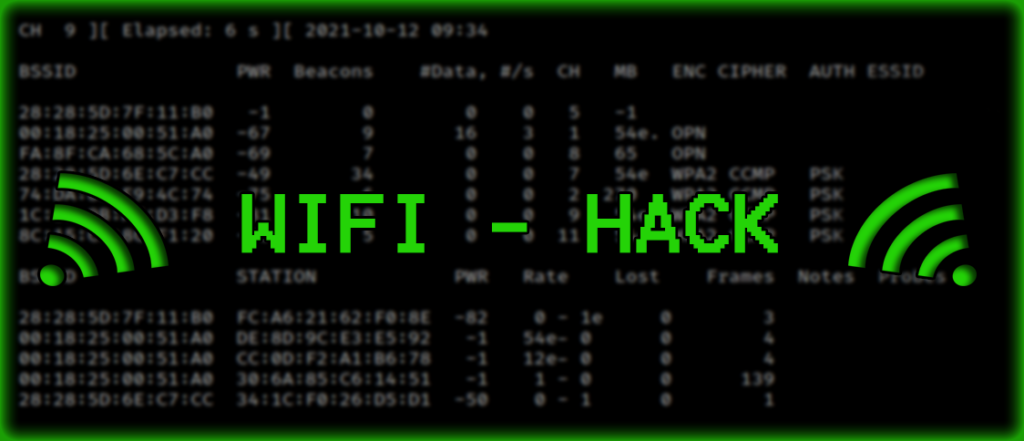Wireless network security is now critical in a world where Wi-Fi is widely available and connections are growing. The ability of hackers to take advantage of weaknesses in wireless networks for nefarious ends has made Wi-Fi hacking a serious danger. This blog examines the increase in Wi-Fi hacking, the methods used by attackers to breach wireless networks, the consequences for people and businesses, and the essential precautions that need to be taken to lessen the risks.

What is Wi-Fi Hacking?
The term “Wi-Fi hacking” describes the use of several methods and instruments to gain unauthorized access to or compromise wireless networks. Attackers use vulnerabilities in routers and access points, misconfigured network settings, and holes in Wi-Fi protocols to obtain private data and interfere with network functions.
Common Techniques Used by Attackers
- Password Cracking
- Brute force and dictionary assaults are used by hackers to break WEP, WPA, and WPA2 passwords using programs like Aircrack-ng and Hashcat.
- Evil Twin Attacks
- Installing rogue Wi-Fi access points that impersonate trustworthy networks in order to intercept traffic and collect passwords is known as an “evil twin attack.
- Packet Sniffing
- Packet sniffing is the process of watching and recording network traffic in order to examine and retrieve private data, including login credentials.
- Router Exploitation
- Router exploitation is the practice of gaining unauthorized access to or control over a router by taking advantage of flaws in the firmware or configuration settings.
Implications of Wi-Fi Hacking
- Data Theft and Privacy Breaches
- Hacking into WiFi networks can result in the theft of private information. This data contains login passwords, financial information, and personal data that attackers could exploit for fraud, identity theft, or illegal account access.
- Network Disruption and Misuse
- Denial-of-service (DoS) attacks and malicious traffic injection are two ways in which attackers can interfere with Wi-Fi networks. This may have an effect on network performance, availability, and dependability, which may have an effect on user annoyance or corporate operations.
- Compromised Devices and Botnet Recruitment
- Hackers can use compromised Wi-Fi networks as entry points to infect linked devices with malware or enlist them in botnets. They then carry out large-scale attacks on other targets, such as denial-of-service attacks, using these botnets.
Tools and Methods Used in Wi-Fi Hacking
- Wi-Fi Hacking Tools
- Aircrack-ng: A suite of tools for auditing wireless networks, including packet capture and password cracking utilities.
- Wireshark: Wireshark is a network protocol analyzer used for packet sniffing and traffic analysis.
- Kali Linux: Kali Linux is a Linux distribution that comes pre-installed with a wide range of penetration testing tools, including hacking WiFi.
- Social Engineering
- Attackers may use social engineering tactics to trick users into revealing Wi-Fi passwords or clicking malicious links that compromise their devices or networks.
- Protecting Against Wi-Fi Hacking
- Use Strong Encryption
- WPA3: Replace outdated WPA2 encryption on Wi-Fi networks with WPA3 encryption, which has more robust security measures.
- Secure Configuration Practices
- Replace the default SSIDs and router passwords with strong, one-of-a-kind credentials.
- Disable the potentially dangerous UPnP (Universal Plug and Play) and WPS (Wi-Fi Protected Setup) functionalities.
- Network Segmentation
- Segment Wi-Fi networks to separate important devices and limit access according to user roles and privileges.
- Regular Security Updates
- Keep router firmware, operating systems, and security software up to date to protect against known vulnerabilities and exploits.
- Monitor Network Activity
- Use intrusion detection and prevention systems (IDS/IPS) to detect and respond to suspicious network activity in real time.
- Educate Users
- Educate users about the dangers of Wi-Fi hacking and safe browsing practices, such as avoiding sensitive transactions on public Wi-Fi networks.
Legal and Ethical Considerations
- Legal Implications
- Numerous cybersecurity and privacy regulations forbid data interception and unauthorized access to wireless networks.
- Organizations must report security breaches that jeopardize personal data and comply with data protection legislation.
- Ethical Considerations
- Prior to performing any Wi-Fi security testing or auditing, respect user privacy and get permission.
Conclusion
Wi-Fi hacking is a serious threat to people, companies, and organizations because it takes advantage of holes in wireless networks to steal information, interfere with operations, and compromise equipment. Wi-Fi is becoming more and more common, so it’s critical to comprehend how attackers operate and put strong security measures in place to reduce the risks. Strong encryption standards, secure configuration procedures, frequent upgrades, and user education are some of the ways that people and businesses may protect their digital assets and privacy from the ever-changing danger landscape of Wi-Fi hacking. In today’s connected world, remain alert, educated, and focus on cybersecurity to guard against the growth in Wi-Fi hacking.
